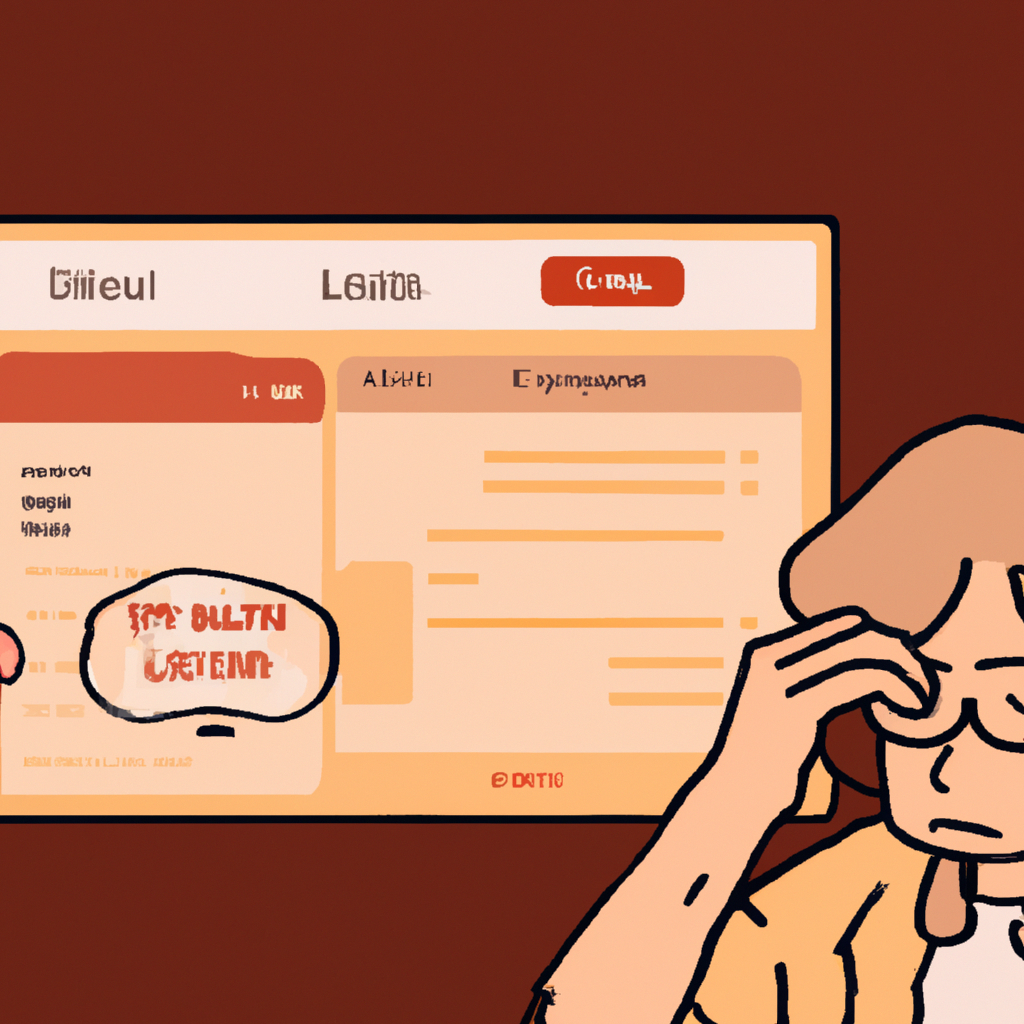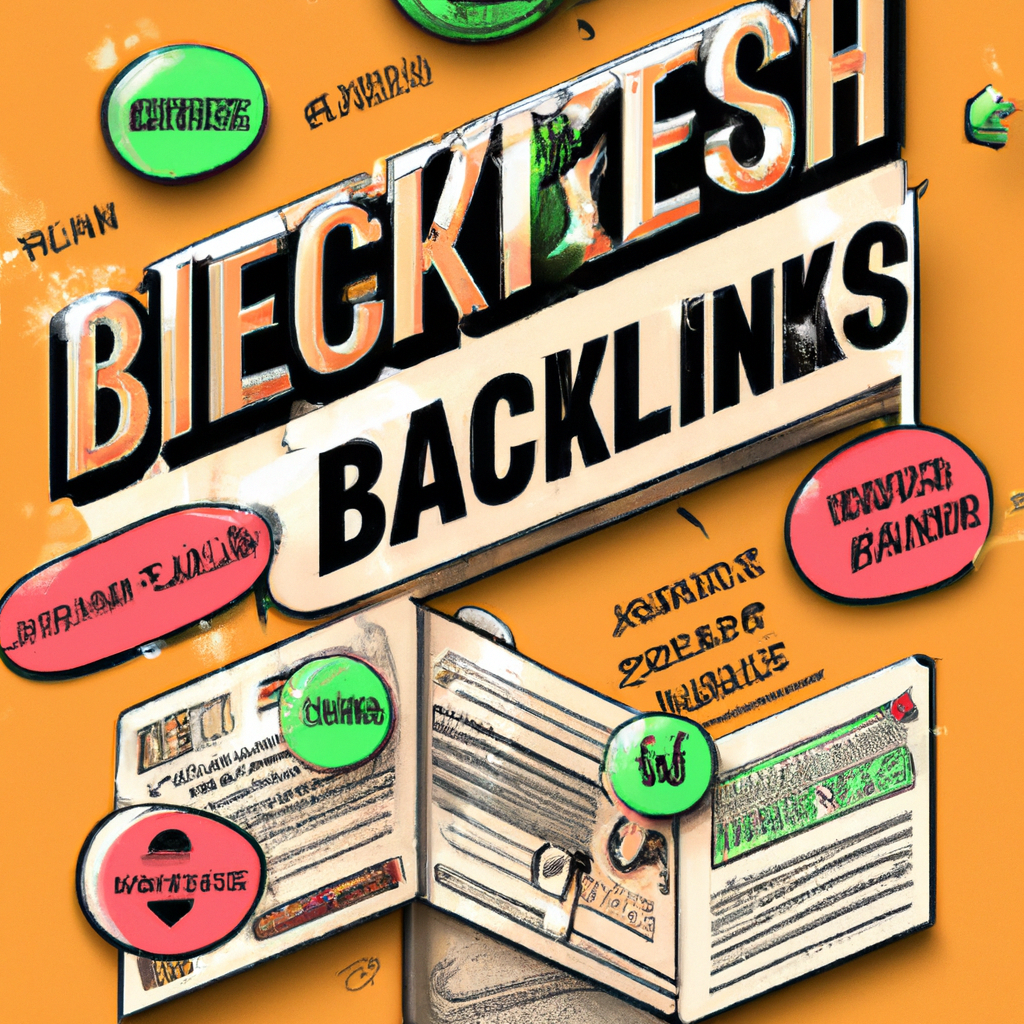Avoid Over Optimizing our Website
Key Takeaway:
- Avoid over-optimizing your website to avoid negative impacts on search rankings: Over-optimization, such as using irrelevant keywords or unnatural link profiles, can lead to search engines viewing your website as spammy and decrease your rankings.
- Prioritize user intent over keyword stuffing: Mixing keyword variations and creating quality content that focuses on user intent can help improve your rankings and provide a better user experience.
- Balance design and functionality: When designing your website, it’s important to prioritize both visual appeal and user-friendliness. Understanding the purpose and intention of your website can help strike a balance between the two.
Introduction
With SEO constantly evolving, it’s essential to stay on top of the game without going overboard. In this section, we’ll delve into two different eras of website optimization: the past, characterized by keyword stuffing and spamming, and the current scenario that stresses a constant evolution in SEO strategies.
The Past: Keyword Stuffing and Spamming
In the past, SEO was mostly focused on keyword stuffing and spamming. Website owners would cram their sites with irrelevant words, often hidden in HTML tags or tables. But, Google noticed and hit them with algorithm updates.
SEO strategies have changed. Now, professionals want natural and relevant content that meets users’ needs. Over-optimization leads to penalties that harm search ranking and traffic. Plus, it makes websites look spammy and untrustworthy. Relevance and naturalness are essential for high rankings and happy users.
Current Scenario: A Constant Evolution in SEO Strategies
SEO strategies are forever changing. To stay competitive, digital marketers must stay on top of updates and adapt.
Technology is advancing quickly, causing search engine algorithms to also develop at an unprecedented rate. SEO techniques now require a more complex approach than just stuffing content with keywords and spamming links.
Marketers must have an understanding of user intent, quality content creation, website design, natural link building, relevant keyword usage, and so much more. They must keep their skill set up-to-date and identify trends that can be used to drive organic traffic. Data analytics tools and engaging customers via social media channels are essential in staying ahead of the competition.
To find success in SEO, it’s important to constantly evolve strategies. This involves data interpretation using AI tools, creative tweaks, and following best practices.
Perils of Over-Optimization and Their Impact on SEO
Are you struggling to boost your website’s search engine ranking? While optimizing your site is crucial for SEO, going overboard can actually harm your online presence. In this section, we’ll explore the perils of over-optimization and how it can negatively impact your search rankings. We’ll also discuss the importance of naturalness and relevance for both Google bots and visitors. Let’s dive in and discover the downside of overzealous optimization.
Negative Impact on Search Rankings
Keyword stuffing and over-optimization can harm search rankings. This is a technique which involves using too many keywords, or an unnatural link profile, to manipulate a website’s position.
Google bots may flag the website as spammy or irrelevant if the content is over-optimized. This can cause poor search rankings. So, it’s essential to create content that is relevant, natural, and user-friendly.
Non-relevant keywords and an unnatural link profile can make a website appear low quality. This will reduce traffic, lower the search ranking, and damage the business.
The focus should be on user intent, not keyword stuffing. Mixing keyword variations in quality content can help websites achieve trustworthiness while avoiding over-optimization issues.
Design and functionality must be balanced for a good user experience and SEO practices. Google bots appreciate a natural and relevant SEO strategy that delivers quality content.
Therefore, avoid keyword stuffing, prioritize user intent, and strike a balance between design and functionality for higher search rankings.
Naturalness and Relevance for Google Bots and Visitors
Achieving high search rankings requires naturalness and relevance. This means providing content that meets consumer intent and has the right keyword density. The health of a website’s search ranking depends on valuable, informative content.
Google’s algorithms can tell the difference between quality content and manipulative spam tactics. Over-optimization can have negative results on SERP. So Google prefers user experiences that are natural, reliable, and trustworthy.
Organizing niche-oriented relevant keywords that answer the visitor’s search intent is important. Mixing keyword variations with the right text helps make the site more accurate. Visual appeal should also be balanced with user accessibility.
Copywriting should use organic language patterns instead of over-optimizing. Partnering with stakeholders and creating value-driven content strengthens customer relationships. In short, naturalness and relevance are key to success in the online marketplace.
Signs of Over-Optimization to Avoid
When it comes to website optimization, many of us focus solely on improving search engine rankings. However, over-optimizing a website can lead to negative consequences. In this section, we’ll examine the signs of over-optimization that should be avoided. We’ll take a closer look at non-relevant keywords, unnatural link profiles, and the potential pitfalls of focusing too heavily on a niche. Let’s ensure our website optimization strategies are effective without falling into the trap of over-optimization.
Non-Relevant Keywords
SEO involves using keywords that fit the website’s content. Using non-relevant keywords may seem like an easy way to get traffic, but it actually harms organic search ranking. Google algorithms are now good at detecting keyword misuse.
Using irrelevant words in content can be confusing for people trying to find what they need. Plus, it can make the website seem untrustworthy and spammy. Search engines may punish a website if there are too many irrelevant pieces of info on one page.
Website owners must research keywords that match their business activities. It’s also important to include topics related to user intent to increase trustworthiness in search engine algorithms. Analyze which topics fit your audience’s needs and include related phrases in quality content.
By following these guidelines, websites owners can help Google bots recognize their website. This can potentially boost their relevance on search engine rankings without resorting to cheating. Linking to your own site more than is needed? That’s an unnatural link profile.
Unnatural Link Profiles
Link profiles are super important for best website rankings in search engines. But, unnatural link profiles can lead to bad consequences for SEO. Factors like links from irrelevant or low-quality websites, excessive links from anchor texts, spammy comments, and same content can make a link profile unnatural.
Google penalizes unnatural link profiles and focuses on giving viewers quality content. Website owners should acquire backlinks organically by creating unique content that attracts visitors. To avoid unnatural link profiles, audit backlinks regularly and reject any suspicious links.
Focus on quality, not quantity and manipulative tactics when creating a website. That way, website owners can have higher organic rankings without compromising the site’s integrity. By skipping unnatural link profiles, website owners can be successful in their SEO efforts for the long term.
Focusing on a Niche
Focusing on a niche is a smart move businesses make. It’s about understanding a subset of possible customers and customizing what you offer them. This way, brands can be seen more, become experts in their field and draw in more potential customers.
When focusing on a niche, it’s important to use words and phrases that relate to the specific group. This helps businesses optimize their content for those search terms, and rank higher in search engines. Also, high-quality content that handles the problems unique to the niche audience will improve user experience and increase engagement.
Don’t forget, focusing on a niche can be great for SEO. But, over-optimization can have bad effects on website rankings. This could happen if businesses use unconnected keywords or cram too many into their content in an unnatural way. Companies should use natural wording without making visitors feel like they are being tricked or sold something too hard.
Prioritizing User Intent Over Keyword Stuffing
Focusing on user intent is crucial for website optimization. In this section, we’ll explore the importance of prioritizing users over keyword stuffing, and how mixing keyword variations and quality content can improve user intent. Let’s dive in!
Mixing Keyword Variations
When it comes to SEO, keyword variation is a must. No repeating keywords! Instead, use synonyms and related terms for natural language. This boosts relevance and long-tail searches.
High-quality content also matters. Put yourself in your audience’s shoes. Create value-driven content that meets their needs. This increases search engine rankings and industry authority.
Bottom line? Avoid spammy tactics and blackhat methods. Mixing up keyword variations and creating value-add content is the best way to up visibility and relevance. Focus on solving user problems, not stuffing keywords.
Quality Content and User Intent
Gone are the days of keyword stuffing for SEO success. Today, search engines prioritize content that is relevant and informative – to match user intent.
Mixing keyword variations is a great tactic. It increases visibility by targeting multiple search queries. This aligns with Google’s goal of providing authentic, helpful information. Quality content that provides answers to user queries will result in higher rankings.
Find the balance between design and functionality. Websites that are visually appealing yet user-friendly fare better in rankings. Keep users in mind, not just optimization. This leads to better results and traffic.
In conclusion: Quality content and user intent are important for any successful SEO strategy. Focus on these elements and refine them for improved rankings and visibility.
Balancing Design and Functionality
When designing a website, it’s important to strike a balance between its visual appeal and user-friendliness. In this section, we’ll explore the intention and purpose of the website, and why it’s crucial to understand them before making design decisions. We’ll also discuss the dilemma of prioritizing between visual appeal and user-friendliness, and examine how each choice can affect the overall success of the website.
Understanding the Intention and Purpose of the Website
Creating a website necessitates understanding the target audience and their needs. This will enable a website to be designed to meet the audience’s requirements. The goals of the website should also be taken into consideration, assessing how it can be helpful and informative for visitors.
When designing, content, and functionality are the focus, it’s vital to cater to user intent, not keyword stuffing. Include relevant keywords with natural language to engage users, avoiding any negative search rankings due to over-optimization. Quality content that meets visitors’ needs will help create a natural link profile, boosting the website’s search engine ranking positions.
Remember that understanding the website’s intention and purpose is important for SEO and business growth. This understanding will help prioritize creating a site with a balance of design and functionality to serve the purpose and intention effectively.
Prioritizing Visual Appeal vs. User-Friendliness
Designing a website is complex. Prioritizing visual appeal and user-friendliness is essential for success. Striking the right balance is key.
Visual appeal draws users and establishes trust. So, web designers must prioritize aesthetics. This means selecting colours, typography, images and layout. Contrasting colours highlight important elements. Legible fonts help with readability.
Functionality and ease of navigation are equally important. Intuitive navigation systems make it easy to use. Designers must balance design choices with functionality. This includes loading time and search engines such as Google.
To prioritize visual appeal vs. user-friendliness, designs must not be too complex. Yet they must remain aesthetically pleasing.
Conclusion: Importance of Avoiding Over-Optimization
Search engines such as Google are getting smarter by the day. They can detect any kind of over-optimization on websites. Ranking higher on search engines is crucial in the digital age, however, it is just as important to avoid over-optimizing. Not striking a balance between optimization and user experience can result in penalties, lower rankings, or a bad user experience.
When we focus too much on optimizing certain elements or technical aspects of our website, it can become less user-friendly. It is necessary to prioritize a balance between SEO and user experience.
Over-optimization can also lead to lower search engine rankings. Search engines want to give users content that is informative, relevant, and valuable. Thus, any unnatural content can bring down our rankings.
In summary, it is necessary to find a balance between website optimization and a positive user experience in the digital world. We can ensure our website has quality content by avoiding over-optimization. A great user experience and high search engine ranking can be achieved by focusing on providing users with a seamless browsing experience.
Five Facts About Avoid Over-Optimizing Our Website:
- ✅ Over-optimization in SEO can harm a website’s ability to rank. (Source: Team Research)
- ✅ Over-optimization today requires a constant evolution in SEO strategies to avoid penalties. (Source: Team Research)
- ✅ Over-optimizing a website can lead to clutter and confusion for users. (Source: Hubspot)
- ✅ Focusing on user intent rather than just keywords is important for avoiding over-optimization. (Source: Localseotactics)
- ✅ Mixing in keyword variations and reviewing your page for keyword focus can help improve search rankings. (Source: Localseotactics)
FAQs about Avoid Over Optimizing Our Website
What is over-optimization and how can it harm my website?
Over-optimization involves making too many SEO improvements that Google may question the website’s relevance and naturalness, leading to a negative impact on your search rankings. Keyword stuffing and an unnatural link profile are common tactics that can lead to over-optimization.
What are some red flags that Google looks for to identify over-optimization?
Google looks at various indicators such as non-relevant keywords, unnatural link profiles, keyword-rich anchor text, and too many deep internal links pointing to a single page. These red flags may lead to Google penalizing the website’s search rankings.
How can I avoid over-optimization when optimizing my website?
It’s important to focus on user intent and create quality content that adds value to users. Mix in keyword variations and review your page for keyword focus. Avoid keyword stuffing, and instead, focus on writing content that is geared towards your target audience and brand name. Use different link types and ensure that your link profile appears natural to Google.
What is the role of design in avoiding over-optimization?
Design plays a crucial role in building a user-friendly website that avoids clutter and confusion. Prioritizing design can be beneficial, as visually appealing websites tend to be preferred by users. However, prioritizing design over functionality and user-friendliness can lead to accessibility issues and may harm your website’s search rankings.
What is the importance of deep internal links in avoiding over-optimization?
Deep internal links are important for creating a natural link profile that is relevant to Google’s indexing algorithms. However, focusing too heavily on deep internal links can be a sign of over-optimization. Instead, use a diverse set of link types and ensure that your website is natural and relevant to both Google bots and visitors.
What is the difference between marketing SEO and technical SEO when avoiding over-optimization?
Marketing SEO is geared towards creating content that is relevant and valuable to users, focusing on user intent and creating a natural link profile. Technical SEO focuses on optimizing the website’s technical elements such as page speed, mobile responsiveness, and website architecture. Both aspects are important for avoiding over-optimization and ensuring that your website ranks well on search engines.







